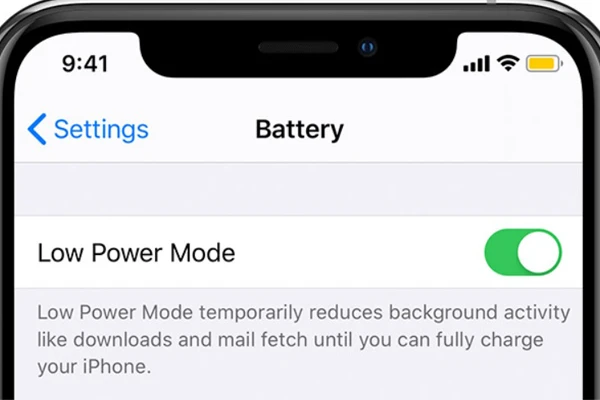Despite a challenging year marked by a global pandemic and economic downturns, the worldwide smartphone market showed resilience in Q4 2020, shipping 359.6 million units, a slight decline of 2% year-on-year. Apple emerged as the leader, shipping 81.8 million iPhones, the company’s highest quarterly shipments to date, driven by strong demand for the iPhone 12 series. Samsung followed in second place, shipping 62 million units, while Xiaomi, Oppo, and Vivo rounded out the top five vendors.
Market Trends and Vendor Performance
Apple’s Success with the iPhone 12
The iPhone 12 series proved to be a hit in Q4 2020, enabling Apple to grow shipments by 4% year-on-year and claim a 23% market share for the quarter. According to Canalys Analyst Vincent Thielke, Apple’s 5G-enabled devices and strategic logistics improvements contributed significantly to this success. By omitting the power adapter from retail boxes, Apple reduced packaging size and weight, which improved shipping efficiency and profitability. Additionally, Apple’s channel-focused initiatives targeted small and medium-sized businesses, further boosting demand across its product range.
Samsung’s Decline but Full-Year Leadership
While Samsung saw a 12% year-on-year decline in Q4 shipments, totalling 62 million units, it maintained its position as the global leader for the full year with 255.6 million units shipped and a 20% market share. Samsung’s diversified portfolio, particularly in the mid-range segment, helped it retain its leadership despite the pandemic’s challenges.
Challenges for Huawei
2020 marked a difficult year for Huawei, which shipped 188.5 million units for the year, a sharp 22% decline from 2019. The US sanctions significantly impacted Huawei’s ability to compete globally, and its decision to divest the Honor brand highlighted the scale of its challenges. Amber Liu, a Canalys Research Analyst, noted that Honor now faces the monumental task of redefining itself while navigating highly competitive markets.
Growth for Xiaomi, Oppo, and Vivo
Chinese vendors Xiaomi, Oppo, and Vivo capitalised on Huawei’s decline, with each recording significant growth in Q4. Xiaomi saw an impressive 31% year-on-year increase, shipping 43.4 million units, while Oppo and Vivo grew by 15% and 14%, respectively. These brands successfully expanded their presence in emerging markets and offered competitive alternatives to Huawei.
The Impact of COVID-19 on the Industry
The second wave of COVID-19 posed significant challenges, but the smartphone industry demonstrated adaptability. Virtual product launches, expanded online fulfilment capacities, and remote sales processes became the norm. Ben Stanton, Canalys Senior Analyst, noted that smartphones played a crucial role in supporting remote work and learning during the pandemic, which helped stabilise demand. With vaccine rollouts underway, the industry’s sentiment for 2021 is cautiously optimistic, anticipating a rebound in shipments.
Smartphone Releases in 2020
Premium Smartphones:
- Samsung Galaxy S20 ($1,499): Exynos 990 / Snapdragon 865, 12GB RAM, 6.2-inch Dynamic AMOLED 2X display, 120Hz refresh rate, Triple rear cameras (12MP wide, 64MP telephoto, 12MP ultrawide), 10MP front camera, 5G connectivity, Space Zoom, 8K video recording.
- Samsung Galaxy S20+ ($1,649): Exynos 990 / Snapdragon 865, 12GB RAM, 6.7-inch Dynamic AMOLED 2X display, 120Hz refresh rate, Quad rear cameras (12MP wide, 64MP telephoto, 12MP ultrawide, DepthVision), 10MP front camera, 5G connectivity, Space Zoom, 8K video recording.
- Samsung Galaxy S20 Ultra ($1,999): Exynos 990 / Snapdragon 865, 12GB/16GB RAM, 6.9-inch Dynamic AMOLED 2X display, 120Hz refresh rate, Quad rear cameras (108MP wide, 48MP periscope telephoto, 12MP ultrawide, DepthVision), 40MP front camera, 5G connectivity, 100x Space Zoom, 8K video recording.
- Apple iPhone 12 Pro ($1,699): Apple A14 Bionic chip, 6GB RAM, 6.1-inch Super Retina XDR display, Triple 12MP rear cameras (wide, telephoto, ultrawide), 12MP TrueDepth front camera, LiDAR scanner, Night mode portraits, Dolby Vision HDR recording.
- Apple iPhone 12 Pro Max ($1,849): Apple A14 Bionic chip, 6GB RAM, 6.7-inch Super Retina XDR display, Triple 12MP rear cameras (wide, telephoto, ultrawide), 12MP TrueDepth front camera, LiDAR scanner, Night mode portraits, Dolby Vision HDR recording.
Mid-Range Smartphones:
- Samsung Galaxy A51 ($599): Exynos 9611 Octa-core processor, 4GB/6GB RAM, 6.5-inch Super AMOLED display, Quad 48MP/12MP/5MP/5MP rear cameras, 32MP front camera, In-display fingerprint sensor, long battery life.
- Google Pixel 4a ($599): Qualcomm Snapdragon 730G, 6GB RAM, 5.81-inch OLED display, 12.2MP rear camera, 8MP front camera, Night Sight, Google Assistant integration, affordable price.
- OnePlus Nord ($679): Qualcomm Snapdragon 765G, 8GB/12GB RAM, 6.44-inch Fluid AMOLED display with 90Hz refresh rate, Quad 48MP/8MP/5MP/2MP rear cameras, dual 32MP/8MP front cameras, 5G connectivity, fast charging.
Budget Smartphones:
- Motorola Moto E7 ($199): MediaTek Helio G25, 2GB RAM, 6.5-inch IPS LCD, Dual 48MP/2MP rear cameras, 5MP front camera, Large display, affordable price.
- Realme C11 ($199): MediaTek Helio G35, 2GB RAM, 6.5-inch IPS LCD, Dual 13MP/2MP rear cameras, 5MP front camera, Large battery, affordable price.
- OPPO A53 ($299): Qualcomm Snapdragon 460, 4GB RAM, 6.5-inch IPS LCD with 90Hz refresh rate, Triple 13MP/2MP/2MP rear cameras, 16MP front camera, Large battery, fast charging.
The global smartphone market’s performance in 2020 reflects its resilience in the face of unprecedented challenges. As the industry prepares for 2021, manufacturers will focus on innovation, affordability, and strategic positioning to meet evolving consumer demands.




